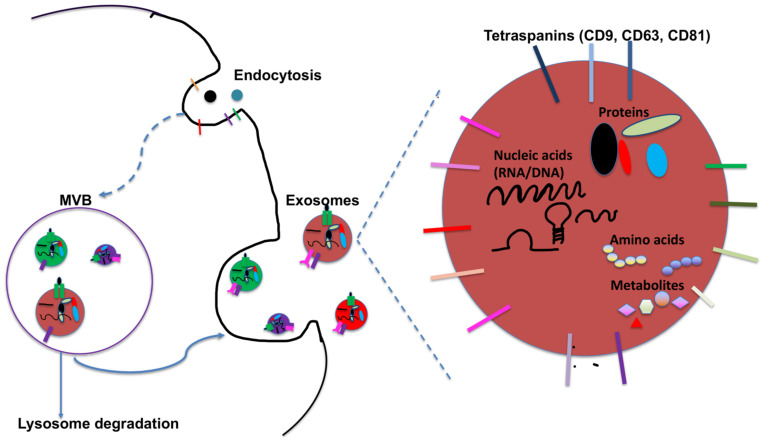Figure 1.
Biogenesis and characteristics of exosomes. Exosomes are produced in the endosomal compartment by inward budding of limiting endosomal membrane into intraluminal vesicles (ILVs) within the lumen of multivesicular bodies (MVBs). MVBs are either targeted for lysosomal degradation or they may fuse with plasma membrane to release these ILVs into the extracellular space as free exosomes. Exosomes are highly heterogenous with size ranging from 40 to 160 nm. Besides expressing an array of receptors on their surface, exosomes carry proteins, metabolites and nucleic acids including mRNA, miRNA, other non-coding RNA and DNA. Tetraspanins (CD9, CD63 and CD81) and other proteins such as Alix and TSG101 are often enriched in exosomes, and are commonly used as markers for exosomes.

